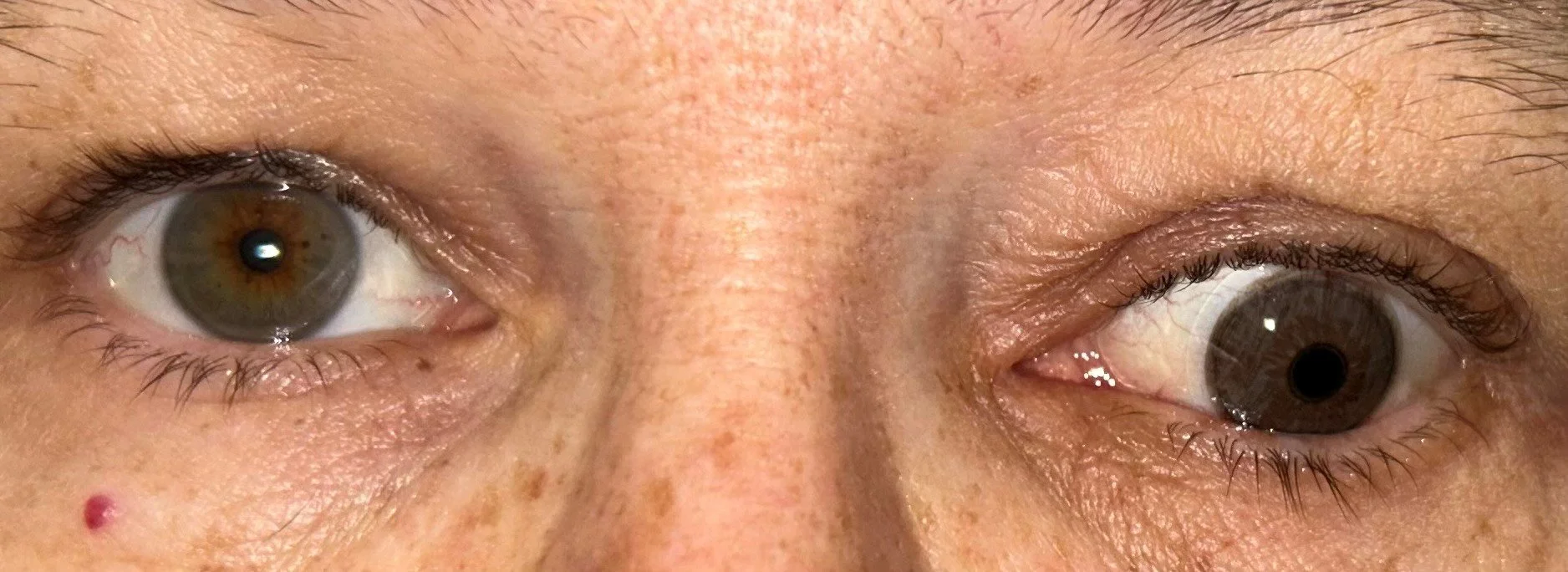Seeing Double? Paint it away!
How a prosthetic hand-painted contact lens is turning a medical solution into a work of art
Double vision (diplopia) can turn the simplest tasks, such as reading or walking downstairs, into a confusing visual mess. Standard management of double vision can involve occluding or patching one eye or prism in glasses to try to re-align the eyes. Patients often will unconsciously close one eye or “squint” which may lead to headaches and brow tension. One lesser-known and utilised solution is the opaque prosthetic hand-painted contact lens - and its not just about aesthetics.
Hand painted prosthetic soft contact lens on eye
Case report:
Mrs T presented to Eyetech seeking a solution for her double vision, which developed as a complication of Thyroid eye disease. Thyroid eye disease can cause swelling in the eye muscles that control eye movements, which can result in limitations in some gazes, hence causing double vision. With treatment, this may resolve, however until her condition could be kept under control, Mrs T had been taping paper over one side of her glasses to block images from one eye. Mrs. T reported that she was more bothered by the diplopia than her cosmetic appearance, although this approach was far from subtle.
She decided she would like to try an opaque blocking cosmetic contact lens, which could be painted to match her other eye. The process involved a fitting appointment where lenses were trialled on the eye and images were taken to achieve a precise colour match.
The lens was ordered with a painted iris to match Mrs T’s own iris colour with the pupil painted black to block out light and resolve the double vision. After a slight colour adjustment, Mrs T was dispensed the lens and was very relieved for her double vision to be resolved without the need for an unsightly tissue taped to her spectacles, which has often attracted unwanted attention. Mrs T was ecstatic by this solution which she would continue to use until her thyroid eye disease could be treated, hopefully resulting in resolution of her double vision.
The Art behind the Science
Prosthetic contact lenses are commonly used to modify the appearance of an eye affected by disfigurement, injury or for cosmetic reasons. However, in this case, the lens was used as a patch for occlusion therapy for double vision, while improving cosmetic concern by matching the appearance of the fellow eye. Each lens is hand-painted in Australia by an artist who uses reference images to match the colour and pattern of the iris.
Who may benefit?
Constant or intermittent diplopia
Iris or pupil anomalies that cause glare and light sensitivities
Traumatic injuries
Patients seeking alternative to occlusion therapy (patching)
Hand-painted prosthetic lenses aren’t just functional - they’re personal, powerful and beautifully bespoke!


